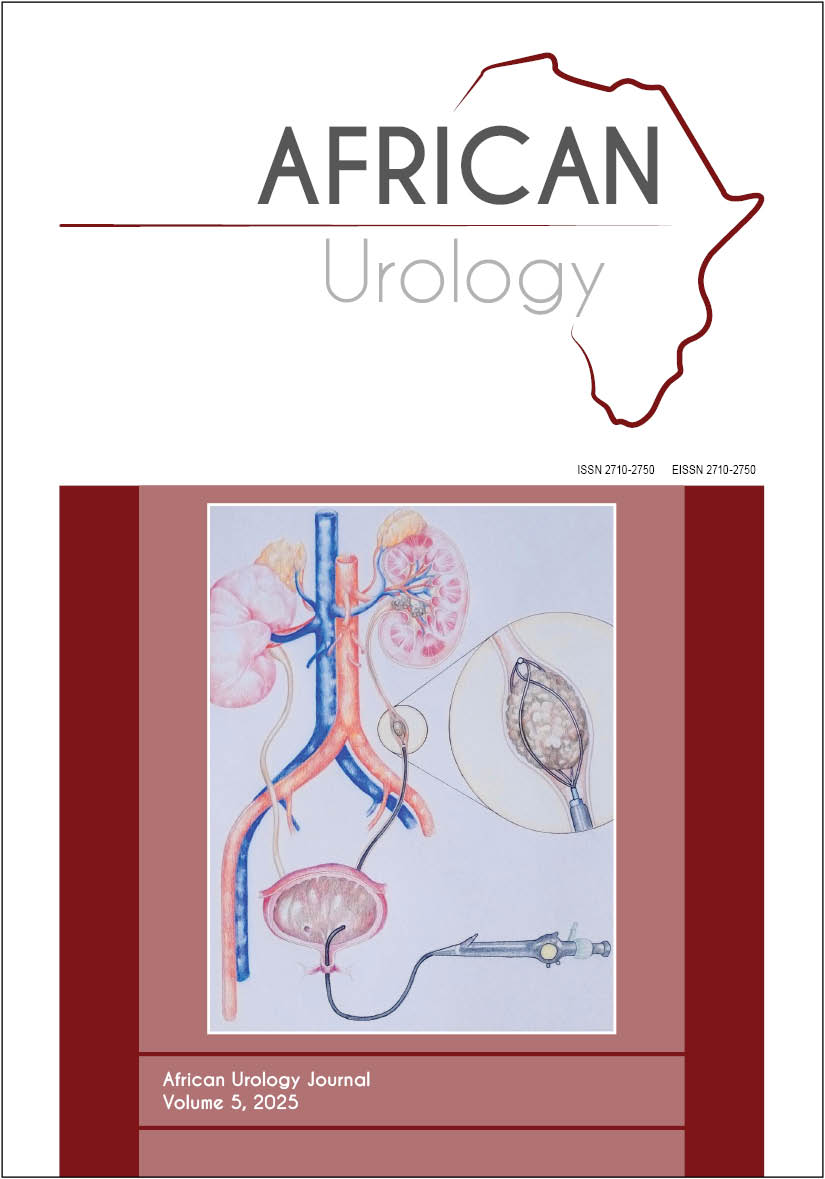Evaluation of prostatic adenomectomy using the Millin technique: single-centre experience at Tanguiéta Zone Hospital, Benin
Main Article Content
Abstract
Introduction: Benign prostatic hyperplasia (BPH) affects up to 80% of elderly men. In sub-Saharan Africa, limited access to minimally invasive techniques means that open adenomectomy remains the treatment of choice for large prostates. The Millin technique, which uses an anterior transcapsular approach, offers better haemostatic control.
Methods: This was a prospective, monocentric study conducted over four years (February 2020 to February 2024), including 83 patients with clinically confirmed BPH (prostate-specific antigen [PSA] ≤ 4 ng/ml) and treated surgically by the same surgeon at the Tanguiéta Zone Hospital, Benin. The International Prostate Symptom Score (IPSS) and quality of life related to urinary symptoms were assessed before and after surgery.
Results: The mean age in our series was 64.01 years. The mean prostate volume was 76.04 cc. The mean preoperative IPSS was 24.23. The mean operating time was 58.23 minutes. The transfusion rate was 6%. The average hospital stay was 6.45 days. The postoperative complication rate was 10.8%, mainly surgical site infections (6%). At six months, the mean IPSS was 1.96, representing an improvement of 91.9%. Notably, 100% of patients reported satisfaction with their quality of life.
Conclusion: Millin adenomectomy is an effective and safe treatment option for BPH in a context of limited resources. It produces excellent functional results and has low complication rates, without requiring sophisticated equipment.
Article Details

This work is licensed under a Creative Commons Attribution-NonCommercial 4.0 International License.
